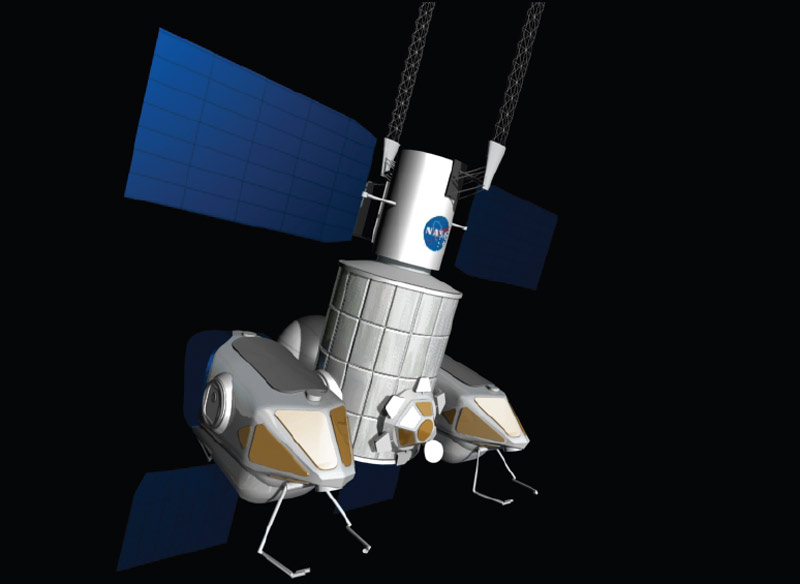Part of Space Station Could Carry Crew to an Asteroid, NASA Says

WASHINGTON ? ?A room on the International Space Station couldultimately be converted and detached to carry astronauts on their next greatadventure, to an asteroid, NASA scientists say.
The space station's Tranquility module, known as Node 3, couldbe repurposed as the main living space for humans headed to a nearbyasteroid, NASA officials said. The node could be connected to two spaceexploration vehicles and have add-on inflatable modules. [Concept photo of theasteroid mission.]
"There's no new ideas under the sun," said BrianWilcox, a roboticist at NASA's Jet Propulsion Laboratory in Pasadena, Calif. Hesaid NASA "Blue Sky" group had focused on repurposing technologiesfor new missions during a brainstorming session this year.
Wilcox discussed the proposal during NASA'stwo-day workshop on near-Earth objects, which concludes here Wednesday.
The space station is slated to operate through at least 2020,which roughly coincides with the earliest likely launch date for humanexploration of an asteroid. In April President Barack Obama set a 2025 goal fora manned mission to an asteroid.
The Node 3 module is one of the newer rooms on the InternationalSpace Station. It is nearly 24 feet (7.3 meters) long and 15 feet (4.5 meters)wide, about the size of a small bus.
Node 3 was deliveredby a NASA space shuttle in February and currently is home to the Cupolaobservation deck, a seven-window dome that gives astronauts a panoramic view ofspace to operate the outpost's robotic arm. The module also is home to much ofthe space station's life support equipment and some astronaut bedrooms, berthsabout the size of a phone booth.
Breaking space news, the latest updates on rocket launches, skywatching events and more!
But for the asteroid mission concept, Node 3 could bedetached and outfitted with two space exploration vehicles, each having apressurized cabin that could typically carry two astronauts (or four in anemergency).
Inflatable structures similar to those proposed by spacehotel entrepreneur Robert Bigelow also could launch within existing rocketsand expand the usable living or working quarters.
The interior of the node would see major makeovers.
A spinning centrifuge device installed within the node mightcreateartificial gravity to help astronauts stave off muscle and bone loss,Wilcox said. The space station currently does not have such a device.
- Gallery? Asteroids Up Close, Astronautson Asteroids
- Images- Space Station's New Window on the World
- NASA'sNew Asteroid Mission Could Save the Planet
Jeremy Hsu is science writer based in New York City whose work has appeared in Scientific American, Discovery Magazine, Backchannel, Wired.com and IEEE Spectrum, among others. He joined the Space.com and Live Science teams in 2010 as a Senior Writer and is currently the Editor-in-Chief of Indicate Media. Jeremy studied history and sociology of science at the University of Pennsylvania, and earned a master's degree in journalism from the NYU Science, Health and Environmental Reporting Program. You can find Jeremy's latest project on Twitter.
